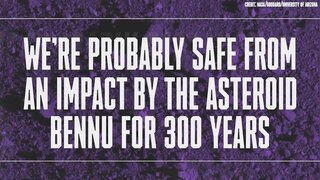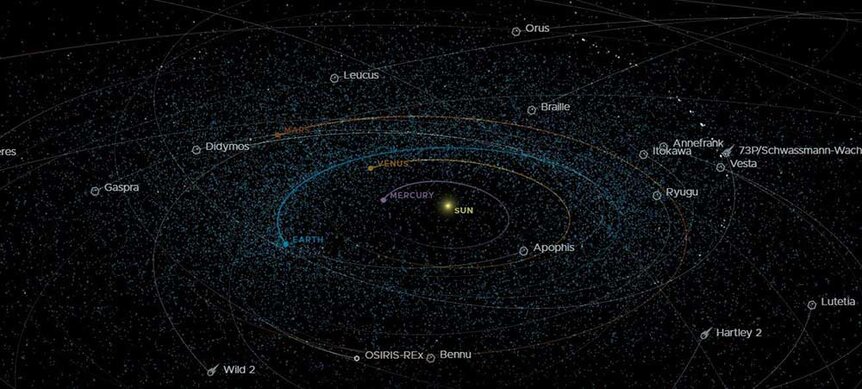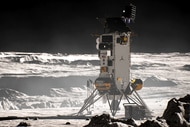An Asteroid Will Get Closer to Earth Than the Moon on June 29
The asteroid 2024 MK will pass by the Earth at about 75% the distance to the Moon.
In the 2021 disaster film Asteroid (streaming now on Peacock), an unassuming family moves from the big city in search of a quieter life in the ‘burbs. What they don’t know is that their new home is in the direct path of an oncoming asteroid.
It might seem like the sort of thing that’s unlikely to happen, but our planet gets visited by asteroids all the time. Like, ALL the time. NASA’s Jet Propulsion Laboratory (JPL) keeps a running list of the next five asteroids headed our way, at any given time, and the list rarely stretches more than a couple days into the future.
Most of the time, the asteroids on approach are relatively uninteresting (to everyone but astronomers), but right now there are two that are worth mentioning, and one which you might have a chance to see for yourself.
For More on Asteroids:
NASA Prepares to Visit a Golden Asteroid Worth Up to $700 Quintillion
Apophis Probably Isn't Coming to Earth in 2029, But What If It Gets Nudged by Another Asteroid?
The Asteroid Bennu Is a Time Capsule from the Early Solar System
Two Asteroids, One Big and One Close, Headed Toward Earth
Of the next five asteroids headed our way, four of them are airplane-sized, between 120 and 210 feet across. None of them will get closer to us than 1.85 million miles, roughly 8 times farther than the Moon. On June 27, 2024, however, a mountain-sized asteroid 7,200 feet across will dip into our cosmic neighborhood for a flyby.
The asteroid 2011 UL21 has an oblong orbit that takes it between the orbits of Mars and Jupiter at its farthest point and inside the orbit of Venus at its closest approach to the Sun. Along the way, it will pass through the orbital domain of Earth, getting as close as 4 million miles away. In 2089 it will have another close pass with Earth, getting as close as 1.65 million miles, which is about as close as its orbit allows it to get. It’s possible that gravitational tugs from Earth or other solar system objects could change its orbit over time which, combined with its size and proximity, earns it the label of potentially hazardous asteroid. Though, there’s no risk of it hitting us today or anytime soon.
How to See the Asteroid 2024 MK When It Gets Closer to the Earth Than the Moon
On Saturday, June 29, 2024, two days after 2011 UL21 makes its closest approach, Earth will be visited by a smaller but much closer asteroid. The recently discovered asteroid 2024 MK will pass within the orbit of the Moon, at a distance of about 180,000 miles, at approximately 1:45 P.M. UTC on June 29, less than two weeks after it was discovered on June 16.
"2024 MK was discovered just a few days ago. An asteroid this large coming so close to Earth is a rare event, but there is no chance of impact," said Richard Moissi from the ESA Planetary Defense Office.
It’s a relatively small object, with an estimated diameter between 390 and 850 feet (120 - 260 meters) and it’s not going to hit us, but it is a reminder that there are potentially dangerous objects out there still waiting to be found.
If you have clear skies, low light pollution, and a half-decent telescope or pair of binoculars, you might be able to catch a glimpse of 2024 MK cruising past. It will be most easily visible from the southern hemisphere where the asteroid will be higher in the sky. Check out the ESA’s NEO (near-Earth object) toolkit to plan your weekend stargazing.
And catch Asteroid, streaming now on Peacock!
















































